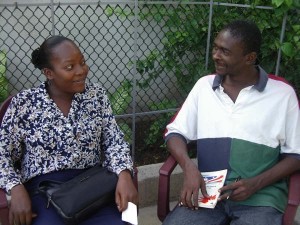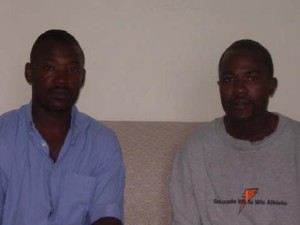There are two kinds of bad handwriting. I’ve had friends and students over the years who write in ways that I find hardly legible. I think, for example, of a wonderful student I worked with at Shimer. His name was Larry. When it came time to type the evaluations of his teachers that he would fill out by hand each semester, a team of three of us would gather in the registrar’s office to interpret what he wrote. One member of the team was a scholar with experience deciphering old manuscripts. Reading Larry’s writing was challenging.
At the same time, no one would have confused his handwriting with a child’s. It was very much developed, even elegant in places. The lines were smooth, the shapes showed Larry’s nice sense of proportions.
The poor handwriting I had when I was learning to write Chinese was quite a different matter. It lacked clarity because it lacked proportion. Its lines were wavering, as if unsure. It resembled nothing so much as the first efforts of a five-year-old child. It was the work of an unpracticed hand.
I was thinking of the different sorts of bad handwriting as I looked at the blackboard in the literacy center we were observing in the countryside outside of Twoudinò, a small city in the northeast of Haiti. It took the teacher about ten minutes to write two short sentences – they were common Haitian proverbs – on the board, and she did it with an evidently unpracticed hand.
Watching her struggle to write, and seeing the results of her struggle, brought to focus the interesting and difficult problem we’re trying to help Fonkoze solve. I’ve written about Fonkoze before. It’s a bank that offers financial services to the rural poor. (See www.fonkoze.org.) It’s also committed to offering its borrowers – nearly 100% of whom are market women – education, starting with basic literacy when necessary. Not just that, but it is committed to developing the very same market women as their own teachers.
Fonkoze helps its clients organize themselves into “credit centers” of 30-40 borrowers. The dream it is pursuing is for those credit centers to become long-term solidarity groups in which, among other things, members are regularly pursuing educational opportunities that they then share with one another. At different moments in a center’s history, different women will step forward to terach the group.
The problem is that there are plenty of credit centers that don’t have members with strong educational backgrounds. Often enough, the best candidates that Fonkoze can find within the centers to serve as literacy teachers are not all that literate themselves. They are, at least, without strong reading and writing skills.
It is in this context that Frémy and I were invited to help Fonkoze develop its program. It’s not that Frémy and I are literacy experts. Fonkoze has a number of people on its staff who have much more experience in literacy that he and I do. What Frémy and I bring is experience at preparing and coaching inexperienced teachers and at organizing simple lesson plans in Creole. We spent the spring working with Fonkoze’s most experienced literacy teacher to do four things. First, we divided the existing Fonkoze basic literacy program into twenty-four weekly units that could be taught over a six-month period. Second, we integrated a discussion component, based on an adaptation of Wonn Refleksyon, into the units. Third, we developed twenty-four simple lesson plans that would help an inexperienced teacher stay on-schedule. Finally, we help devise a way to present the whole package to new teachers of literacy in a five-day introductory workshop.
The problem is that there is no way to know whether the teachers have been able to benefit from the workshops or whether they are able to make good use of the lesson plans without observing them in the classroom. And if there was ever an example of an observer whose presence greatly effects the results of the events under observation then that example is me, sitting in a classroom in the middle of the Haitian countryside, attempting to unobtrusively watch a teacher at work.
I try not to kid myself. For all my efforts to be quiet, to be undemanding of attention, I always stick out here like the proverbial sore thumb.
The classroom outside of Twoudinò was a great example. The activity the literacy teacher was leading the women in her class through involved inviting them to divide into small groups of three-four to answer a simple and important question: How had their work in the literacy center gone so far? What had they accomplished in the six weeks they had been working together? What had they failed to do?
In the presence of the white man whom they knew to have been sent by Fonkoze, all three small groups instead answered the following question: How would you express the gratitude you feel toward Fonkoze for all it is doing for you? No one had asked that question, but it was as though my presence required the women to address it.
So what happened in front of me was not necessarily what generally might have happened had I not been there. At the same time, I gained some useful information from the visit, enough to suggest ways that our preparations are working and ways that they’re not.
For one thing, the teacher did not have the women organize the benches they were seated at into a circle. They made something between a half-circle and a straight line, facing the blackboard, instead. Our insistence that classes should meet in circles if at all possible had not been clear and convincing enough. One the other hand, the teacher behaved very much like one of the participants of the group. Though she spent a good deal of time making sure that members of each of the small groups new just what they were supposed to be working on, she eventually joined one of the small groups, becoming one of its members. She had understood, in other words, the importance we place on a teacher’s viewing herselfas a member of the group.
What struck me most, however, was what happened after the various small groups presented the large group with the answers they had agreed on. What happened was this: Nothing. Or almost nothing. Normally, the work in small groups is intended to serve as preparation for a larger discussion by the group as a whole. In Twoudinò that larger discussion never got off the ground. The teacher didn’t have a sense of how to get it moving.
A few weeks after the visit to Twoudinò, I was in the middle of a field outside the southern town of Twen observing a very different group. The group was much larger because the literacy monitor had convinced all the members of the credit center, even the ones not participating in the basic literacy class, to participate in the class’s discussion. He was an experienced literacy teacher – a primary school teacher, in fact – one of the few men who have been retained from Fonkoze’s last literacy cycle, which took place before the decision to engage members of the credit centers to teach the classes.
He gave the group’s members good clear instructions, and he worked hard but quietly through the individual and small-group work to ensure that the market women understood each aspect of the class’s task. He eventually joined one of the small groups and participated in it actively, but without dominating.
When the small groups were finished, and they had reported the results of their reflections, and it was time to encourage a broader discussion among the group as a whole, nothing happened. Just as had been the case in Twoudinò, the literacy teacher lacked a sense of what he was to do.
I’m not in a panic about this, because I believe that much of what the discussions we’ve integrated into the literacy program are designed to accomplish can happen in the small groups. If the two classes I saw are good examples, these seem to be going well. But it seems clear that the step of the process we still need very much to struggle with is its heart: helping teacher’s learn to sit in a circle with their students and lead a conversation. We need to help them listen closely and to respond in lively and creative ways to what their students say.
In one sense, we’re asking nothing more than for them to reliably serve as good partners in dialogue. And one could easily imagine that that would be the most natural thing in the world.
Clearly it’s not, and we have a lot more work to do.

